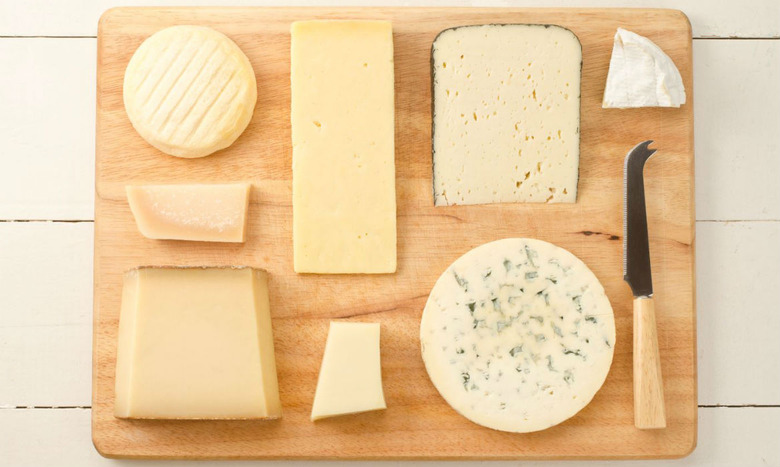Hooked On Cheese: Cheese Serving 101
I recently returned from San Francisco's annual Winter Fancy Food Show, the year's biggest West Coast specialty food convention by far. With 80,000 products on display and 1,500 vendors, this can be an overwhelming event, to say the least! But I've attended for so many years now that I'm pretty used to the sheer volume of products I taste, particularly the cheeses, which can number in the thousands.
While perusing the various cheese booths at the show, I'm always surprised that some suppliers and cheesemakers don't display their cheeses in a manner that shows them off effectively. So what's the correct way to serve cheese? Here are my fundamental recommendations:
Temperature
Cheese must always be served at room temperature. Cheese consists of between 40% and 75% fat – basically oil – and when oil is cold, it congeals (try putting your olive oil in the fridge if you'd like to test this). The flavors of a cheese reside primarily in its oils. When cheese is allowed to warm to room temperature, the oils are free-flowing and will make more thorough contact with your taste buds, allowing you to experience and appreciate more subtle flavors. This is particularly important for soft-ripened cheeses, such as double- and triple-creams, but it applies to all cheese across the board (no "cheese board" pun intended).
Packaging
It's important to take cheese out of its wrapping while allowing it to warm up. Cheese contains living organisms that need to breathe in order to fully develop their flavors, and different cheeses need to breathe in different ways. For example, white bloomy-rind cheeses emit ammonia as they age, so they must be exposed to air to allow the ammonia to dissipate. Allowing your cheese to air out for at least an hour before serving will improve the flavor immensely. In addition, if you bought a big chunk of cheese and it was wrapped in plastic, trim off the parts of the cheese that touched the wrapping. Plastic wrap imparts a discernable taste to cheese, and the longer it has been wrapped, the more plastic flavor it will have.
Portions and Pairing
When trying to allow your samplers to taste the particular subtleties of a cheese's flavor, always present it in smaller, bite-sized portions and pair it with fresh bread or plain crackers. Water crackers are ideal because of their neutral flavor profile. I was a bit shocked at the Fancy Food Show when I was offered enormous cheese samples atop flavored crackers – the crackers totally overpowered the flavors of the cheese itself! If you are eating cheese at home and you know you like a particular flavored cracker with a cheese, of course that's perfectly fine, but if you're serving guests and aren't sure of their preferences, go with the plainest of crackers and reasonable portions.
The most important thing to keep in mind when serving cheese? Keep it simple. Let your cheese warm up, or don't refrigerate it if you're going to eat it between 24 and 36 hours after purchasing it. Take it out of its packaging so it can breathe, and serve it with warm fresh bread or plain crackers. Let the cheese be the star; allow its nuanced flavors be enjoyed to the fullest.
You can follow Raymond's cheese adventures on Facebook, Twitter, and his website. Additional reporting by Madeleine James.
